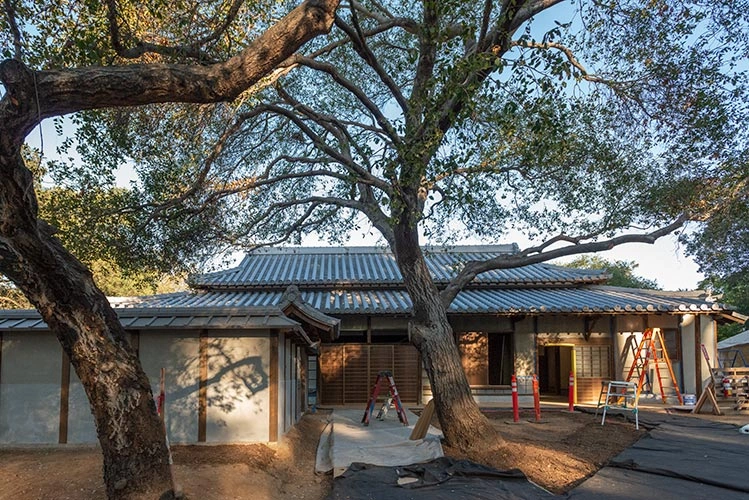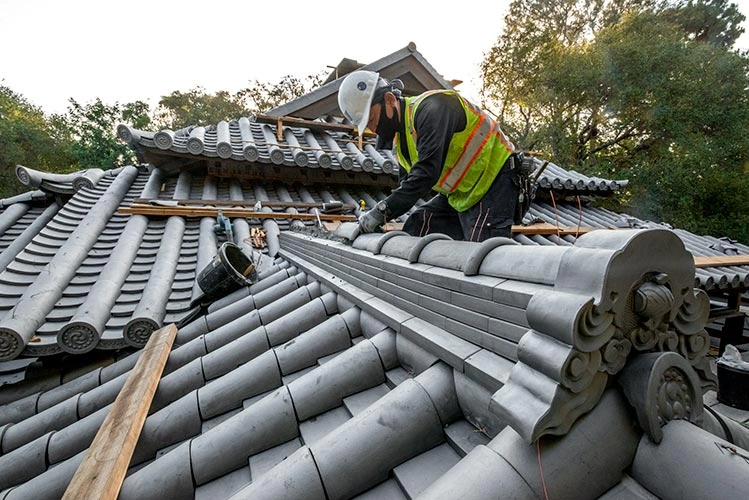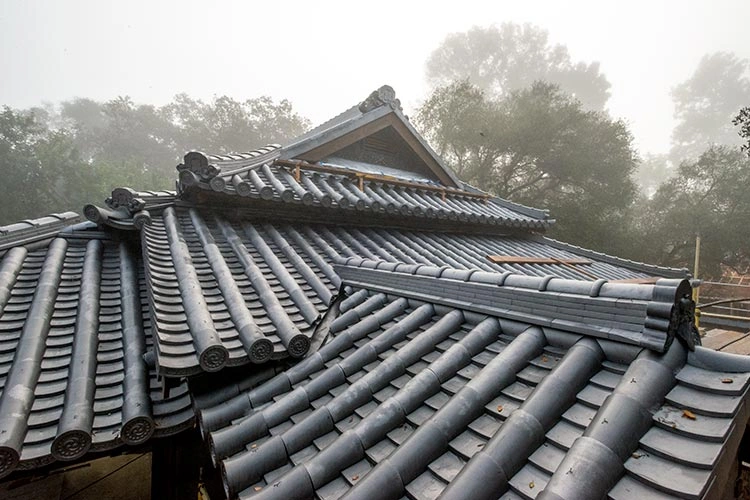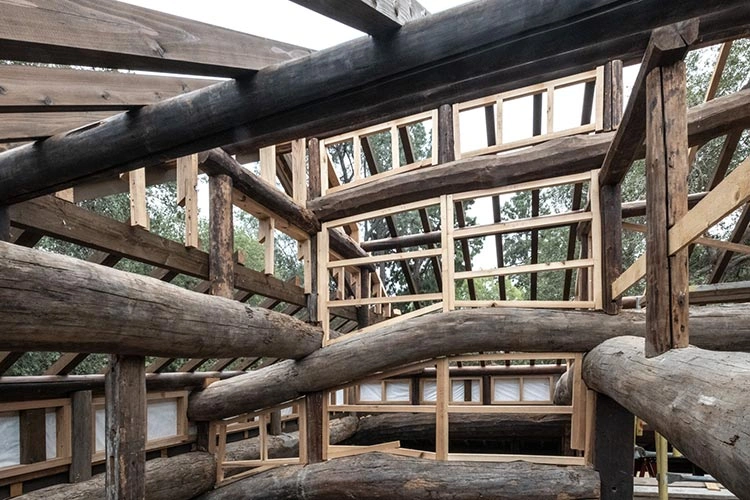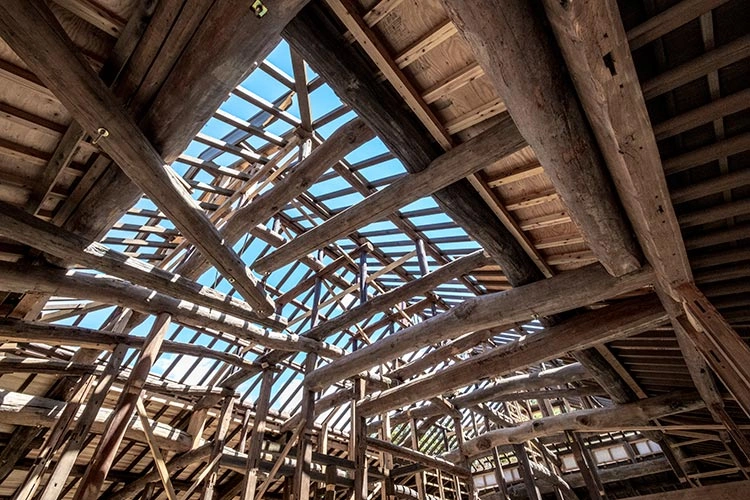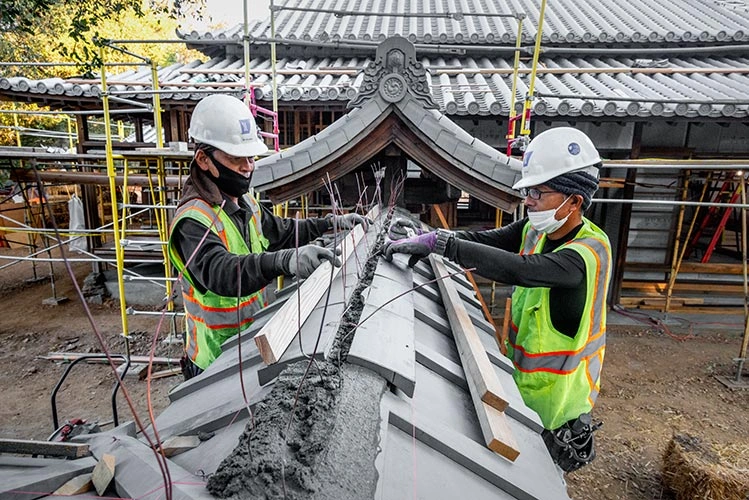SAN MARINO, Calif.—The Huntington Library, Art Museum, and Botanical Gardens will open a major new feature in its renowned Japanese Garden in the fall of 2023, when the reconstruction of a 320-year-old magistrate’s (shōya) house from Marugame, Japan, will be complete. Named the Japanese Heritage Shōya House, the 3,000-square-foot residence was built around 1700 and served as the center of village life. At The Huntington, visitors will be able to view the house from the interior and walk around a re-created period compound that will include a residential garden with a pond. When it first opens, the 2-acre site will include a new gatehouse entryway based on the original, as well as landscape elements that closely resemble the house’s original garden. Eventually, the site will include more interactive components and terraced fields.
Los Angeles residents Yohko and Akira Yokoi offered their historic family home to The Huntington in 2016. Huntington representatives made numerous visits to the structure in Marugame and participated in study sessions with architects in Japan before developing a strategy for moving the house and outbuildings to The Huntington. Since 2019, artisans from Japan have been working alongside local experts to assemble the structures and re-create the traditional wood and stonework features, prioritizing the traditions of Japanese carpentry, craftsmanship, and sensitivity to materials.
“The new Japanese Heritage Shōya House will offer a glimpse into rural Japanese life some 300 years ago and provide insights into that culture and its sustainability practices,” Huntington President Karen R. Lawrence said. “We are very grateful to the Yokoi family for giving The Huntington the opportunity to tell this important story as an immersive experience for visitors.”
The historic house was the residence for successive generations of the Yokoi family, who served as the shōya of a small farming district of Marugame, a town in Kagawa prefecture, Japan. Their residence functioned as the local town hall and village square. The magistrates were responsible for preserving each year’s seed crop and organizing and managing the community, as well as celebrating life events.
Sustainability will be a major theme of the interpretive scheme. “We aim to present a working model of Edo period permaculture and regenerative agriculture,” said Robert Hori, the gardens cultural curator and programs director at The Huntington. “It represents real-life circumstances: An authentically constructed Japanese house using natural materials will demonstrate how a community became self-sufficient. Emphasis was placed on reducing waste and repairing items so they could be reused or repurposed. Visitors will see how the Japanese village represents a useful intersection of humans and nature.”
# # #
[EDITOR’S NOTE: High-resolution digital images available for publicity use. Request Images]
About The Huntington
The Huntington Library, Art Museum, and Botanical Gardens is a cultural and educational institution of global significance. Building on Henry E. and Arabella Huntington’s renowned collections, The Huntington supports research and promotes education in the arts, humanities, and botanical science through the growth and preservation of its collections; the development of a community of scholars, school programs, and partnerships; and the display and interpretation of its extraordinary resources for diverse audiences. The Huntington is located at 1151 Oxford Road, San Marino, California, 12 miles from downtown Los Angeles. Visitor information: huntington.org.
CONTACTS:
Keisha Raines, 626-405-2246, kraines@huntington.org
Thea M. Page, 626-405-2260, tpage@huntington.org
